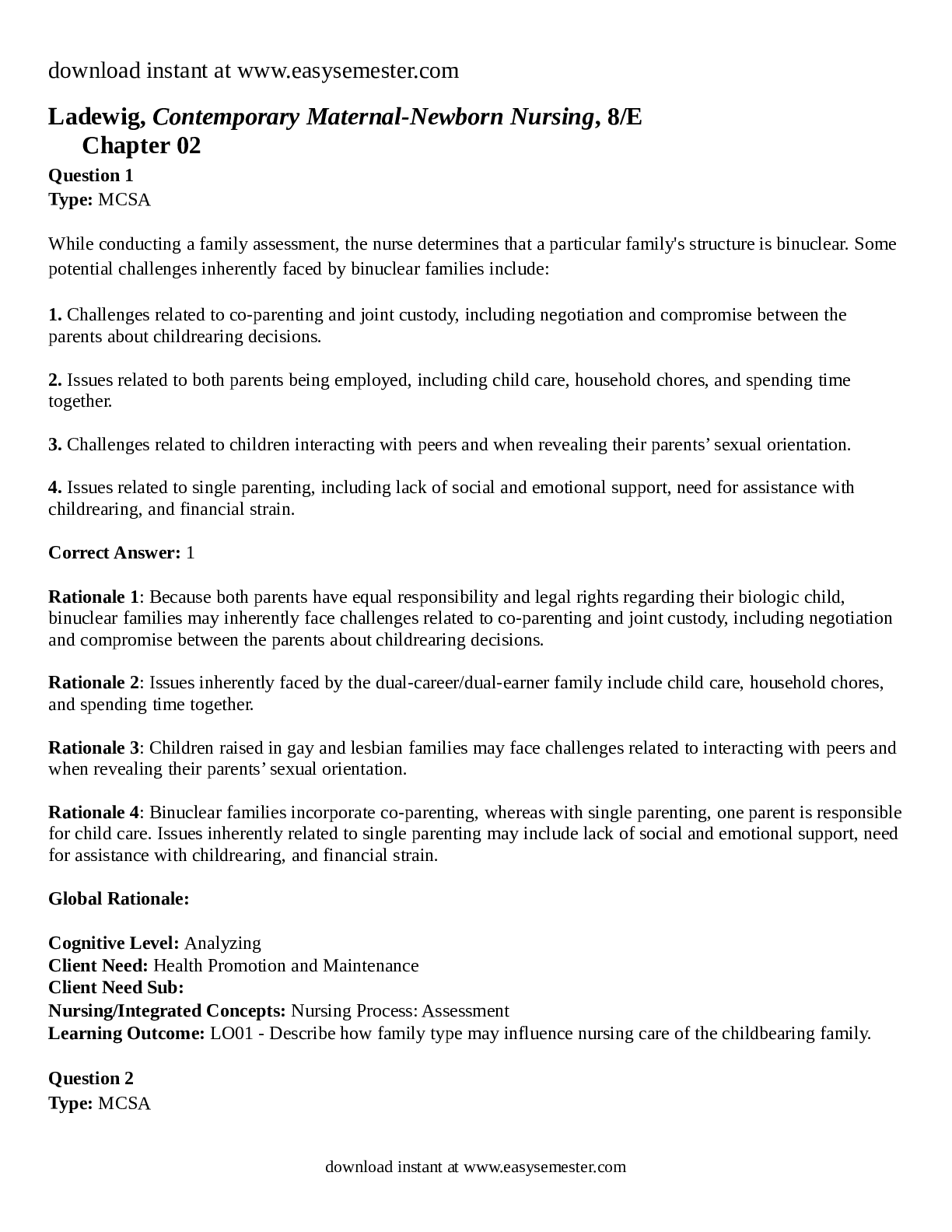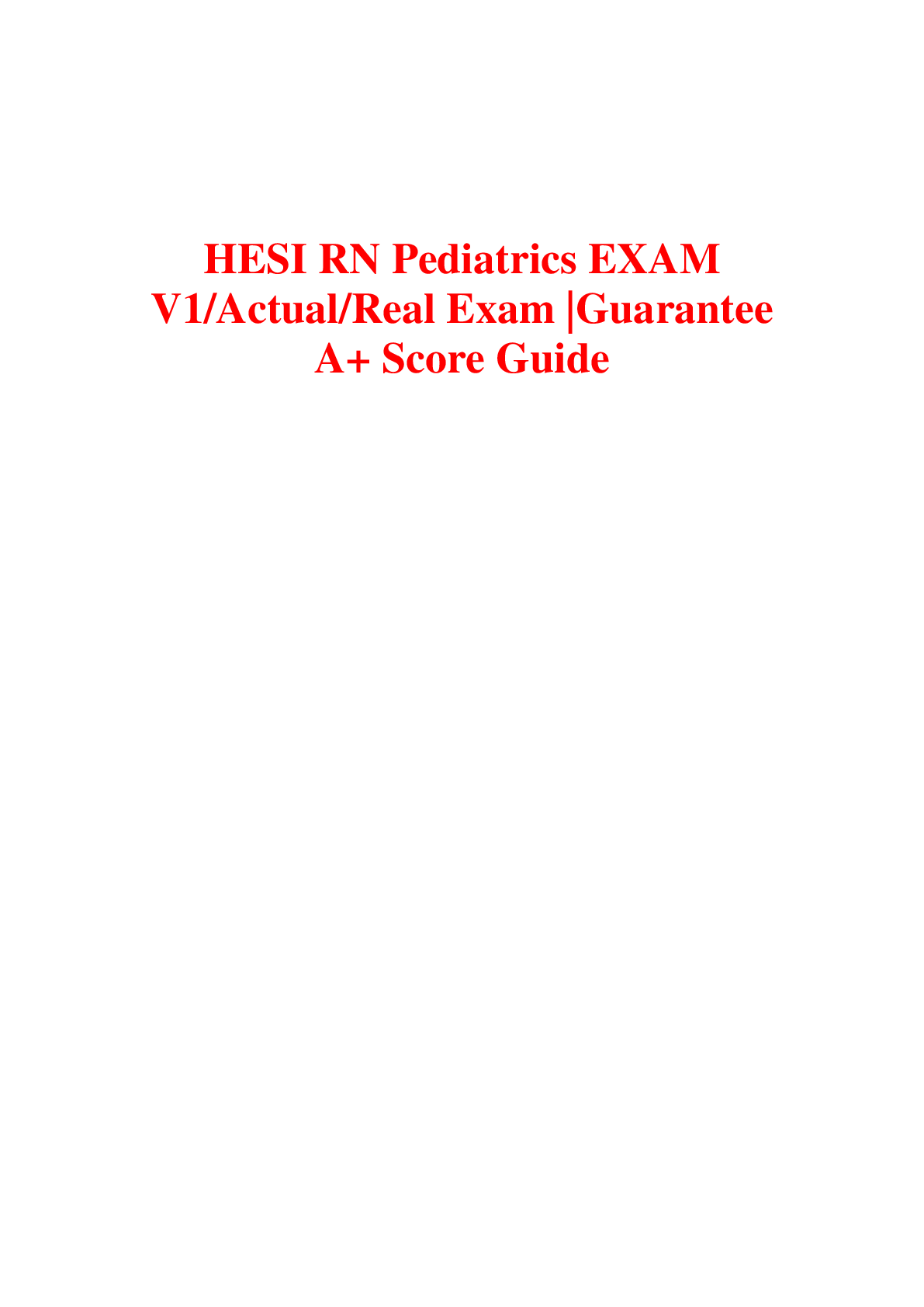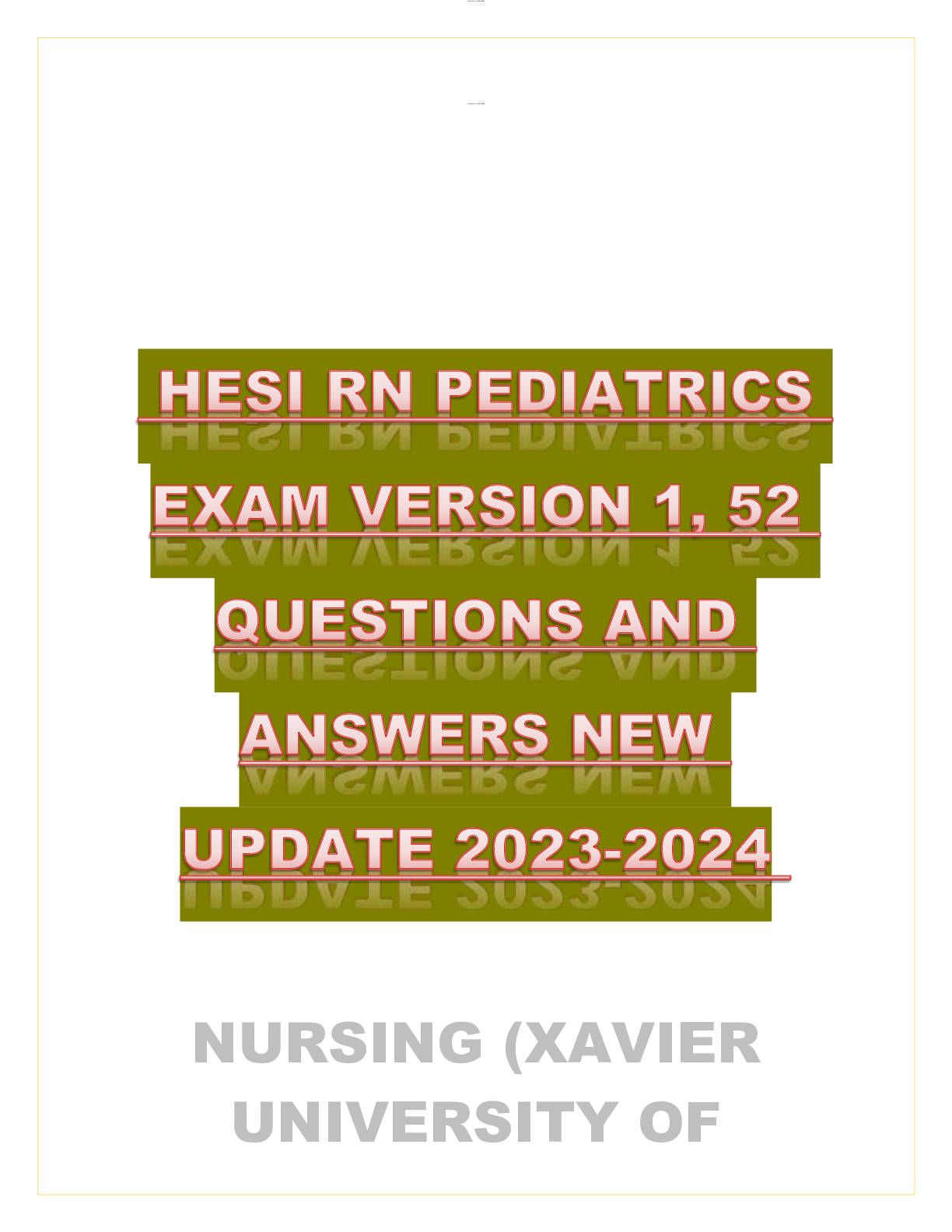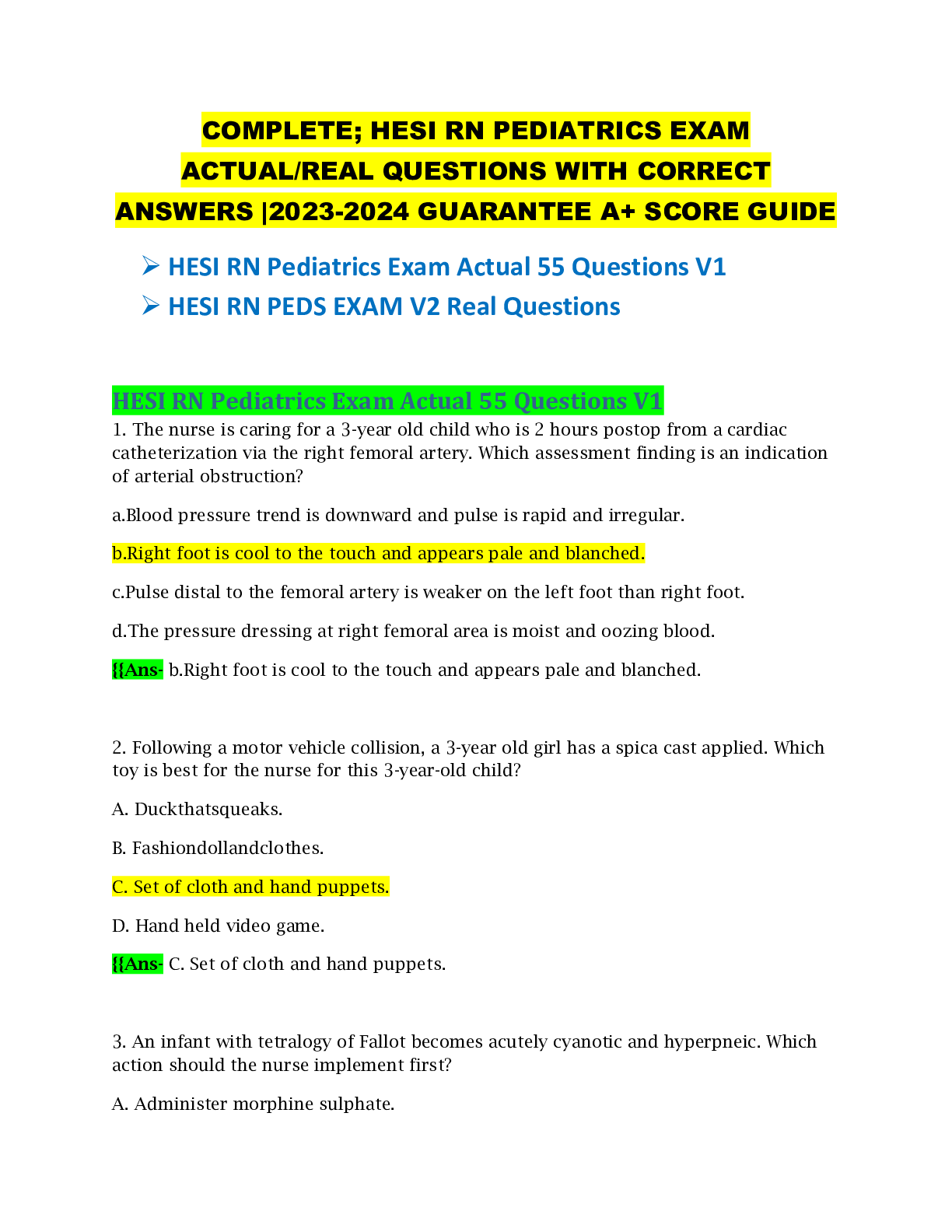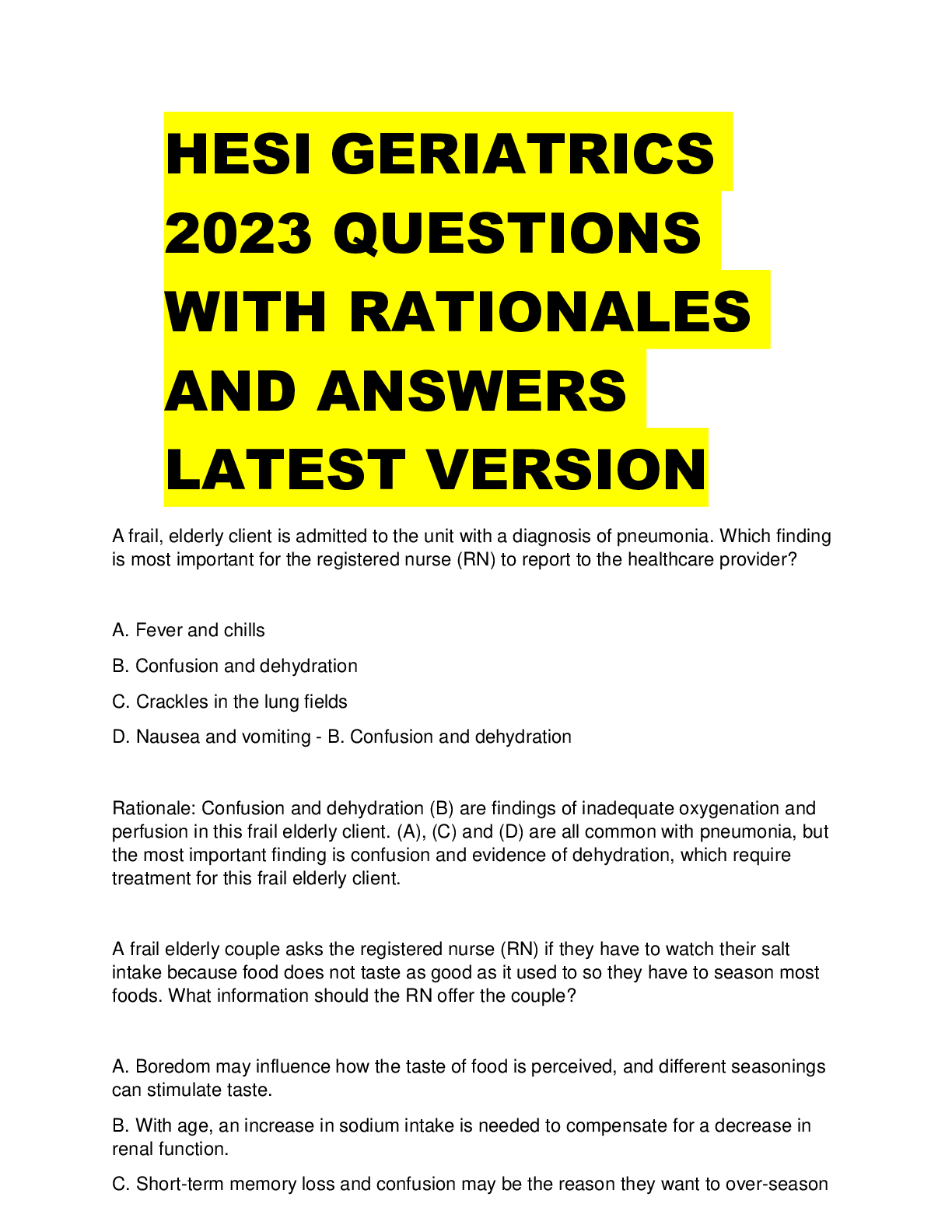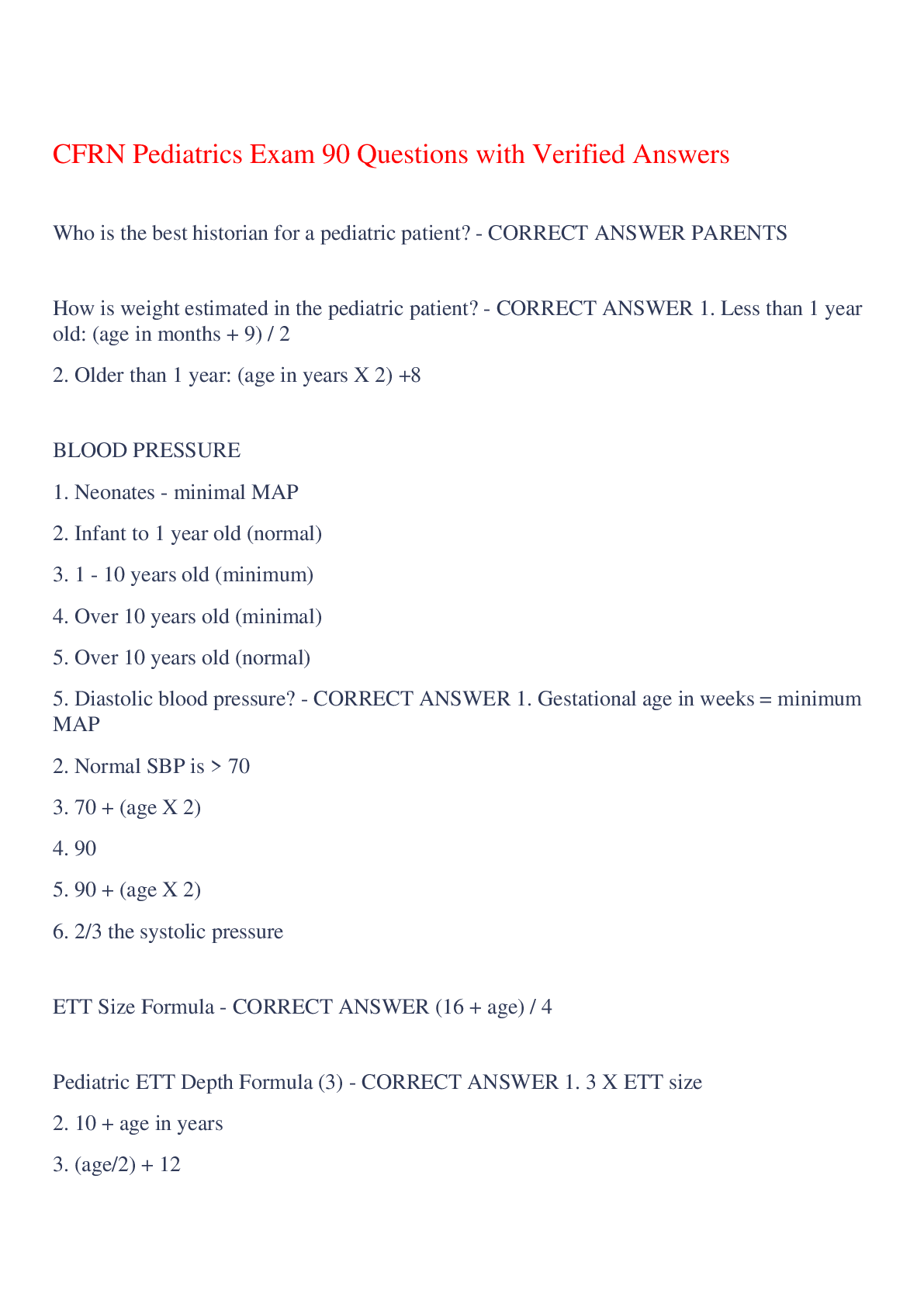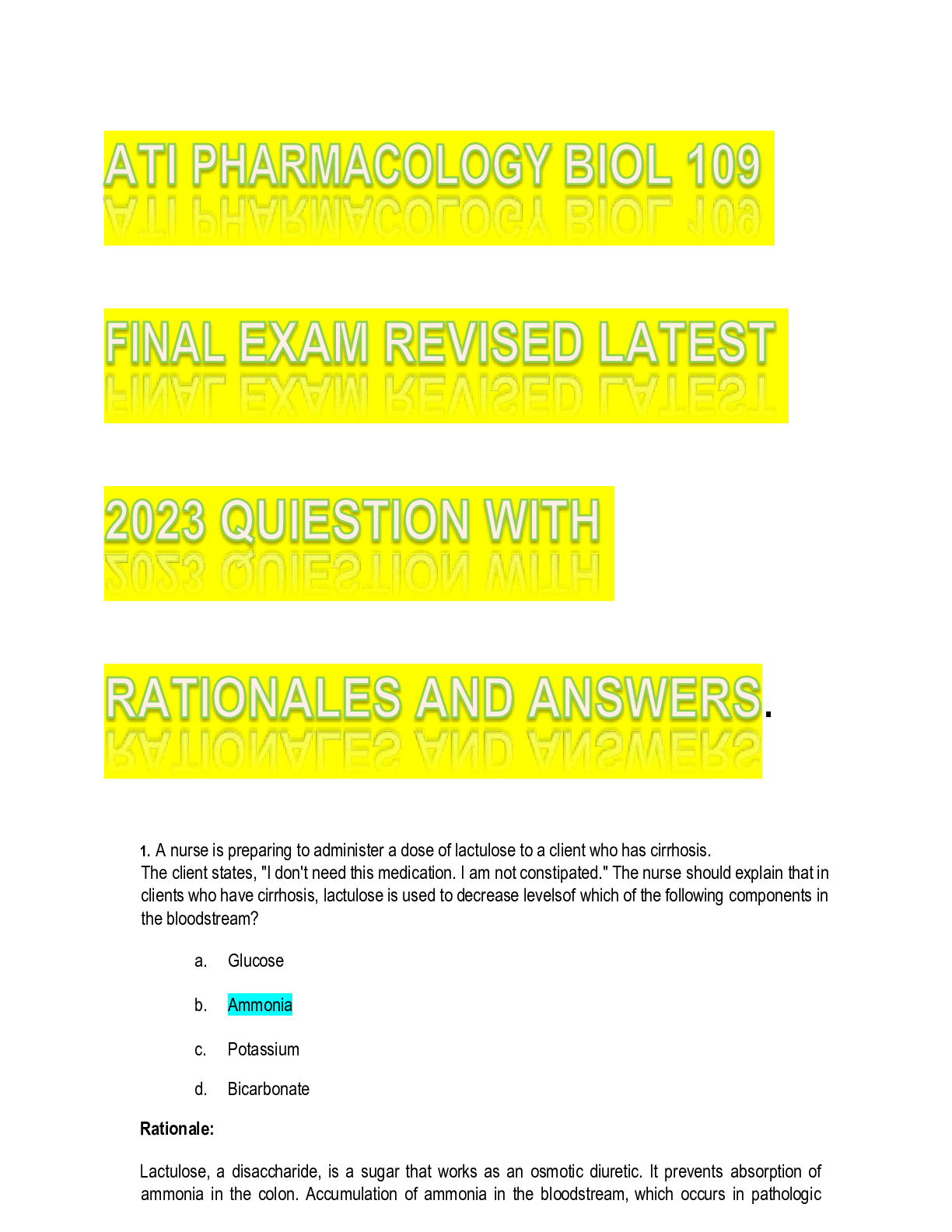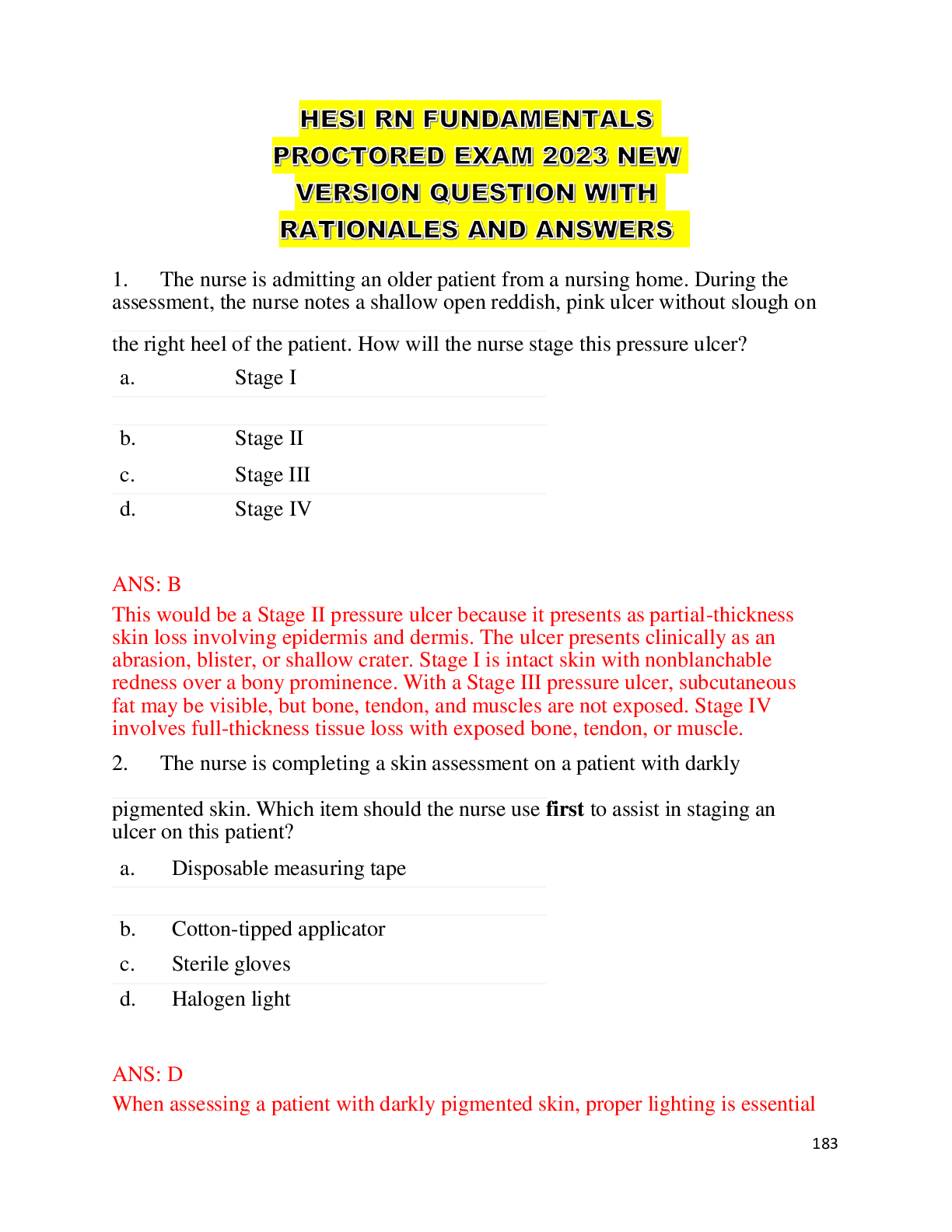Health Care > EXAM > 2023/2024 HESI RN PEDIATRICS EXAM V2 50 QUESTIONS WITH RATIONALES AND ANSWERS NURSING (XAVIER UNIVE (All)
2023/2024 HESI RN PEDIATRICS EXAM V2 50 QUESTIONS WITH RATIONALES AND ANSWERS NURSING (XAVIER UNIVERSITY OF LOUISIANA)
Document Content and Description Below
2023/2024 HESI RN PEDIATRICS EXAM V2 50 QUESTIONS WITH RATIONALES AND ANSWERS NURSING (XAVIER UNIVERSITY OF LOUISIANA) 1. The nurse is planning postoperative care for a child who ... has had a cleft lip repair. What is the most important reason to minimize this child's crying during the recovery period? A. Tear formation increases salivation. B. This behavior increases respirations. C. Excessive hysteria can lead to vomiting. D. Crying stresses the suture line Rationale: Prevention of stress on the lip suture line is essential for optimum healing and the cosmetic appearance of a cleft lip repair. Although crying also causes options A, B, and C, these conditions do not create a problem for the child with a cleft lip repair. 2. An infant is receiving digoxin for congestive heart failure. The apical heart rate is assessed at 80 beats/min. What intervention should the nurse implement? A. Call for a portable chest radiograph. B. Obtain a therapeutic drug level. C. Reassess the heart rate in 30 minutes. D. Administer digoxin immune Fab stat. Rationale: Sinus bradycardia (heart rate <90 to 110 beats/min in an infant) is an indication of digoxin toxicity, so assessment of the client's digoxin level has the highest priority. Option A is not indicated at this time. Option C provides helpful assessment data but does not address the cause of the problem and delays needed intervention. Option D is indicated for a serious, life-threatening overdose with digoxin. 3. The nurse admits a child to the intensive care unit with a possible diagnosis of Wilms tumor - What is the most safety precaution for child? A. maintain NPO status B. Limit visitors to the immediate family C. Place a do not palpate abdomen sign on head of bed D. Encourage ambulation in the pre-operative period Rationale: 1 | P a g e Protect child from injury; place a sign on bed stating "no abdominal palpation" (to prevent accidental fragmentation and dislodging into the abdominal cavity). The other option choices are not relevant at this time. 4. The nurse is preparing a teaching plan for the mother of a child who has been diagnosed with celiac disease. Choosing which lunch will be within the therapeutic management of a child with celiac disease? A. Turkey salad, milk, and oatmeal cookies B. Baked chicken, coleslaw, soda, and frozen fruit dessert C. Tuna salad sandwich on whole wheat bread, milk, and ice cream D. Turkey sandwich on rye bread, orange juice, and fresh fruit Rationale: A child with celiac disease is managed on a gluten-free diet, which eliminates food products containing oats, wheat, rye, or barley. 5. A 6-month-old male infant is admitted to the postanesthesia care unit with elbow restraints in place. He has an endotracheal tube and is ventilator-dependent but will be extubated soon following recovery from anesthesia. Which nursing intervention should be included in this child's plan of care? A. Keep restraints on at all times to prevent unplanned extubation. B. Remove restraints one at a time and provide range-of-motion exercises. C. Remove all restraints simultaneously and provide play activities. D. Document the reason for application of the restraints every 72 hours. Rationale: Removing restraints one at a time is safer than option C. The infant should have the restrained extremities assessed frequently for signs of neurologic or vascular impairment, and range-of-motion exercises should be performed with these assessments. Under no circumstances should restraints be applied to the client continuously. Documentation of assessment findings regarding the restrained extremities must occur much more frequently than every 72 hours; however, the reason for using restraints must be justified and should be stated in the medical record. 6. The nurse assigns an unlicensed assistive personnel (UAP) to provide morning care to a newly admitted child with bacterial meningitis. What is the most important instruction for the nurse to review with the UAP? A. Use designated isolation precautions. B. Keep the lighting in the room dim. C. Allow the parents to assist with care. 2 | P a g e [Show More]
Last updated: 9 months ago
Preview 1 out of 22 pages
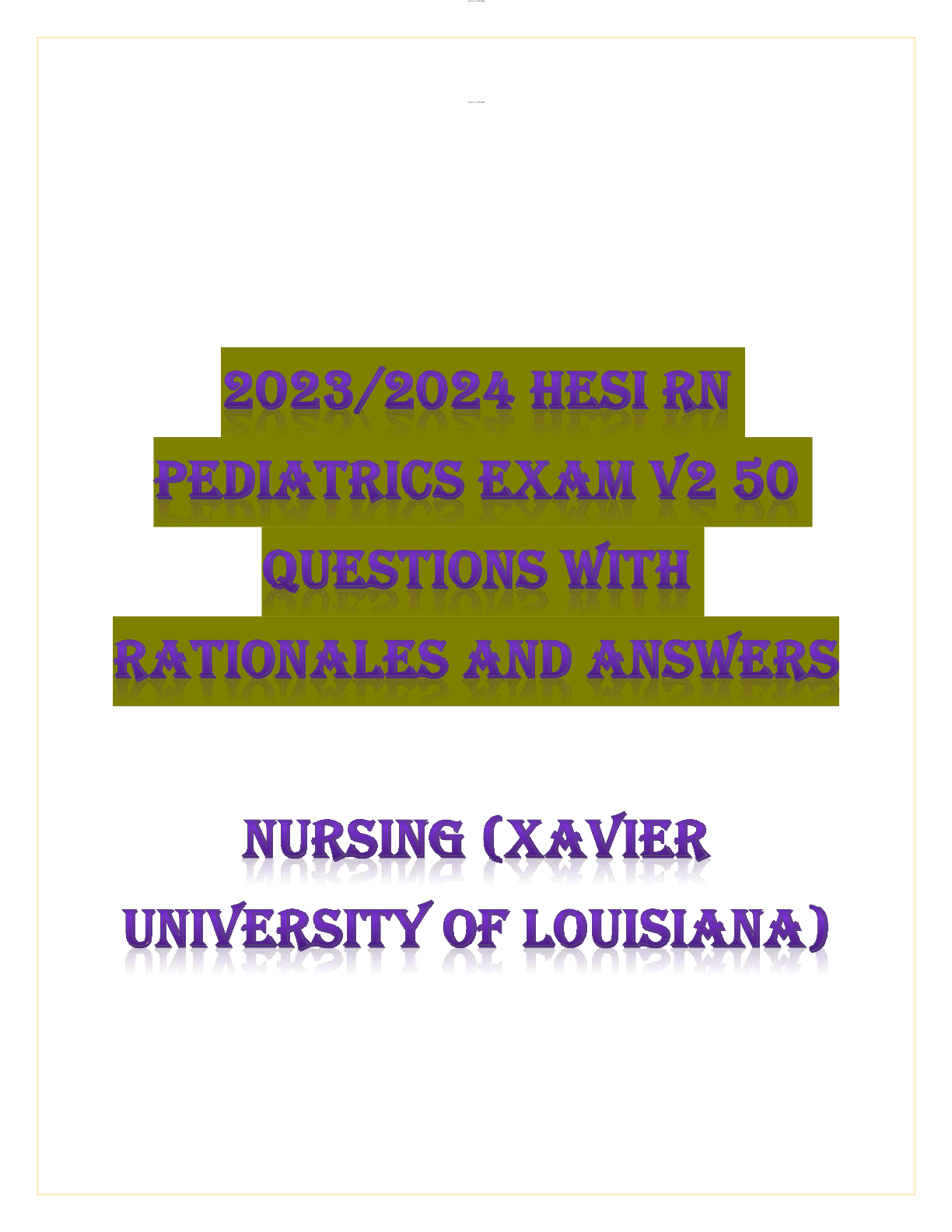
Reviews( 0 )
Document information
Connected school, study & course
About the document
Uploaded On
Aug 04, 2023
Number of pages
22
Written in
Additional information
This document has been written for:
Uploaded
Aug 04, 2023
Downloads
0
Views
89

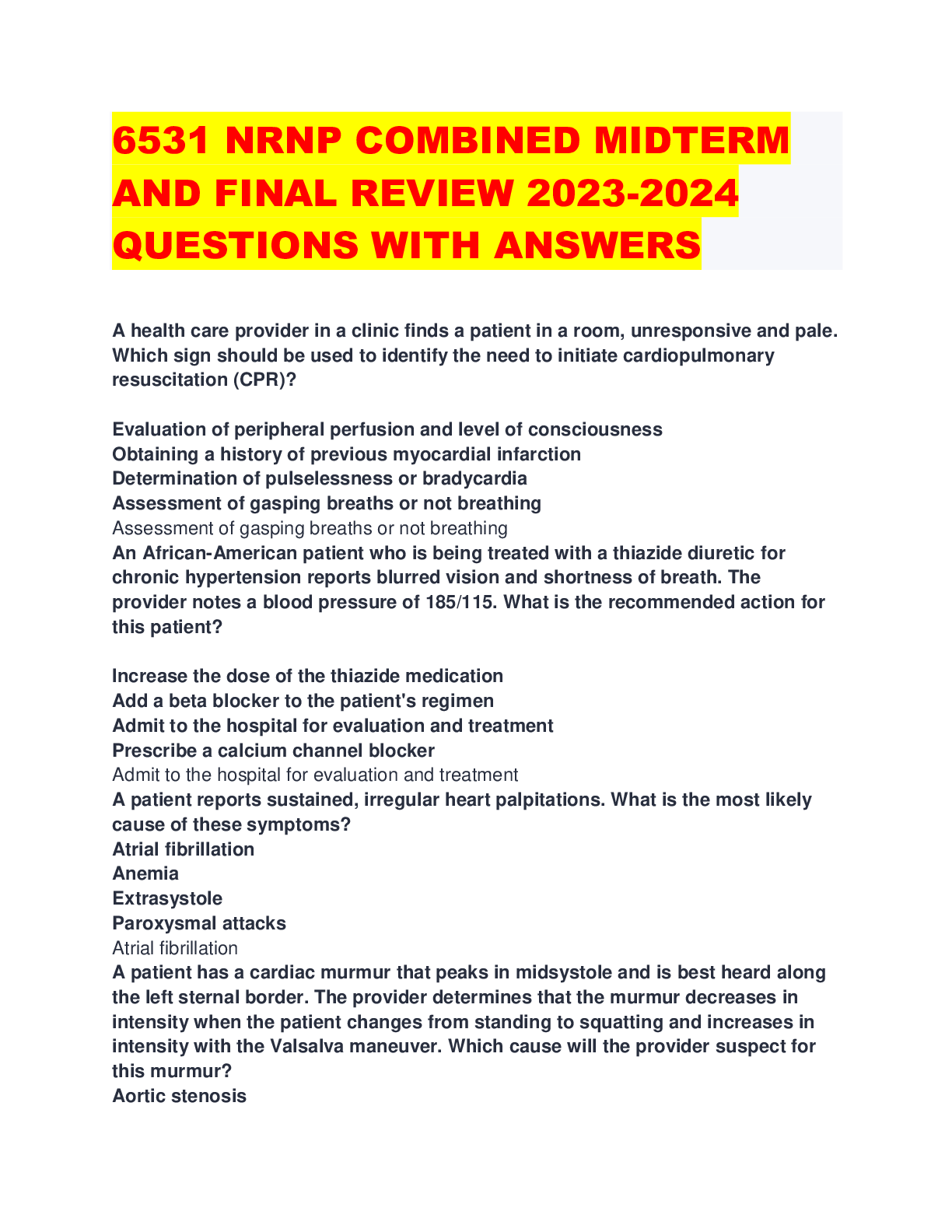
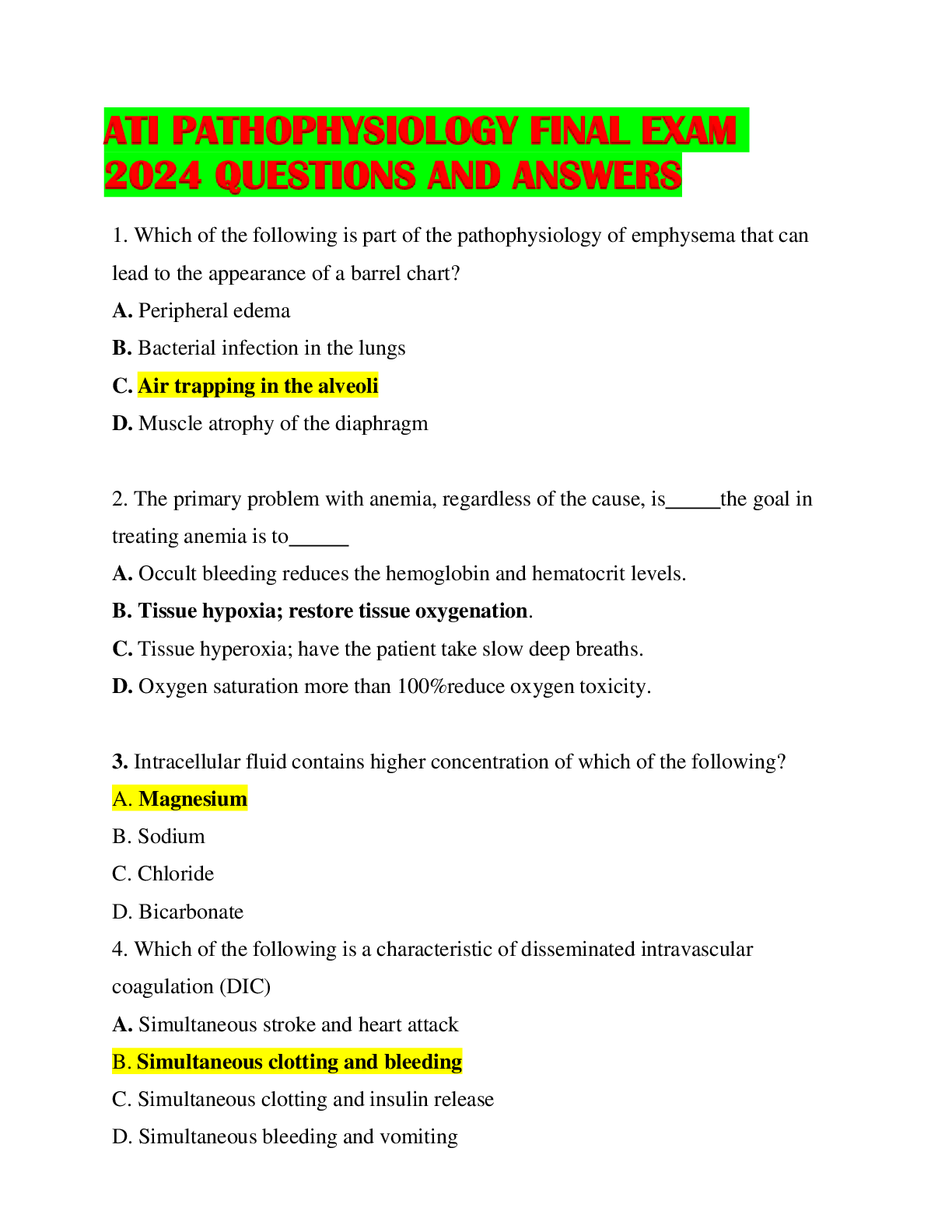
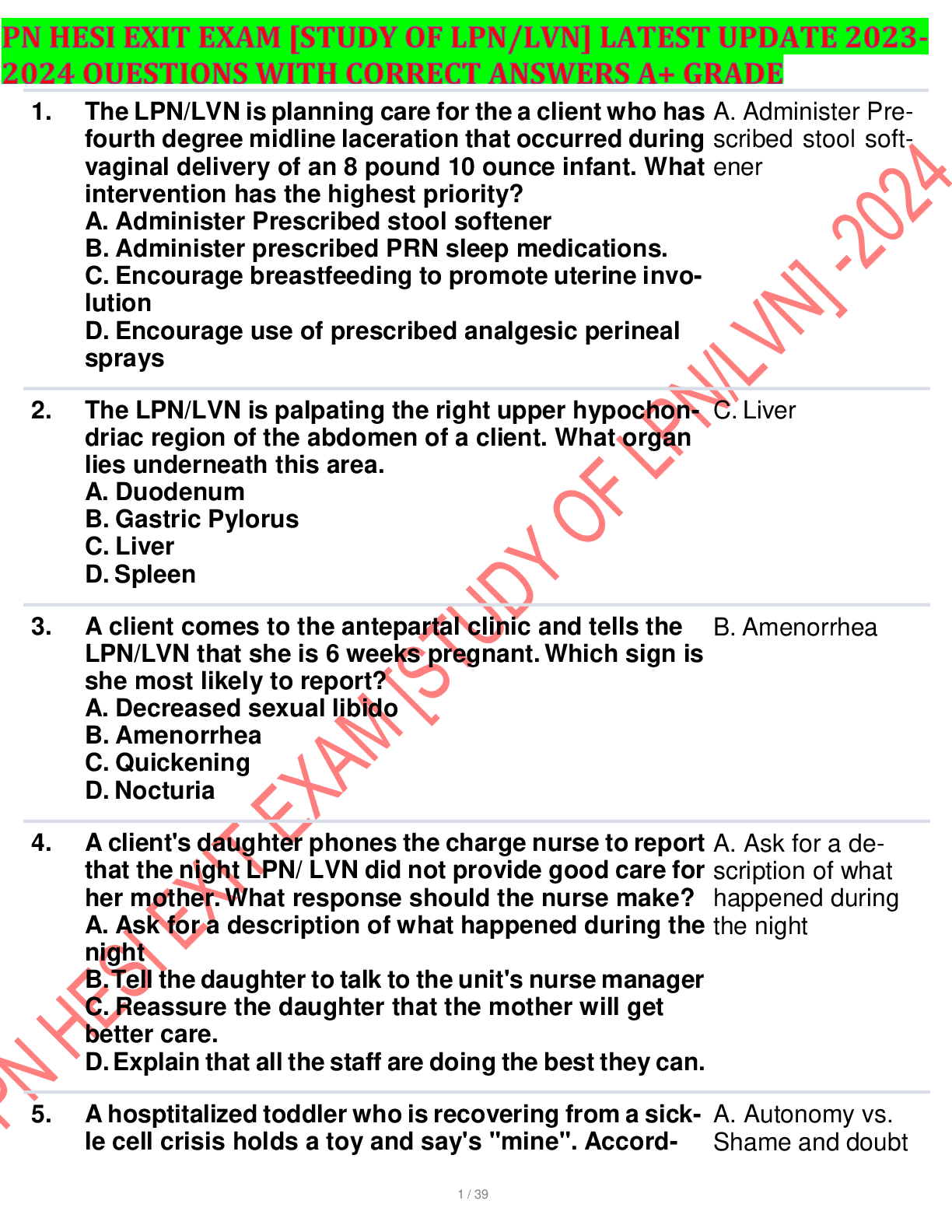
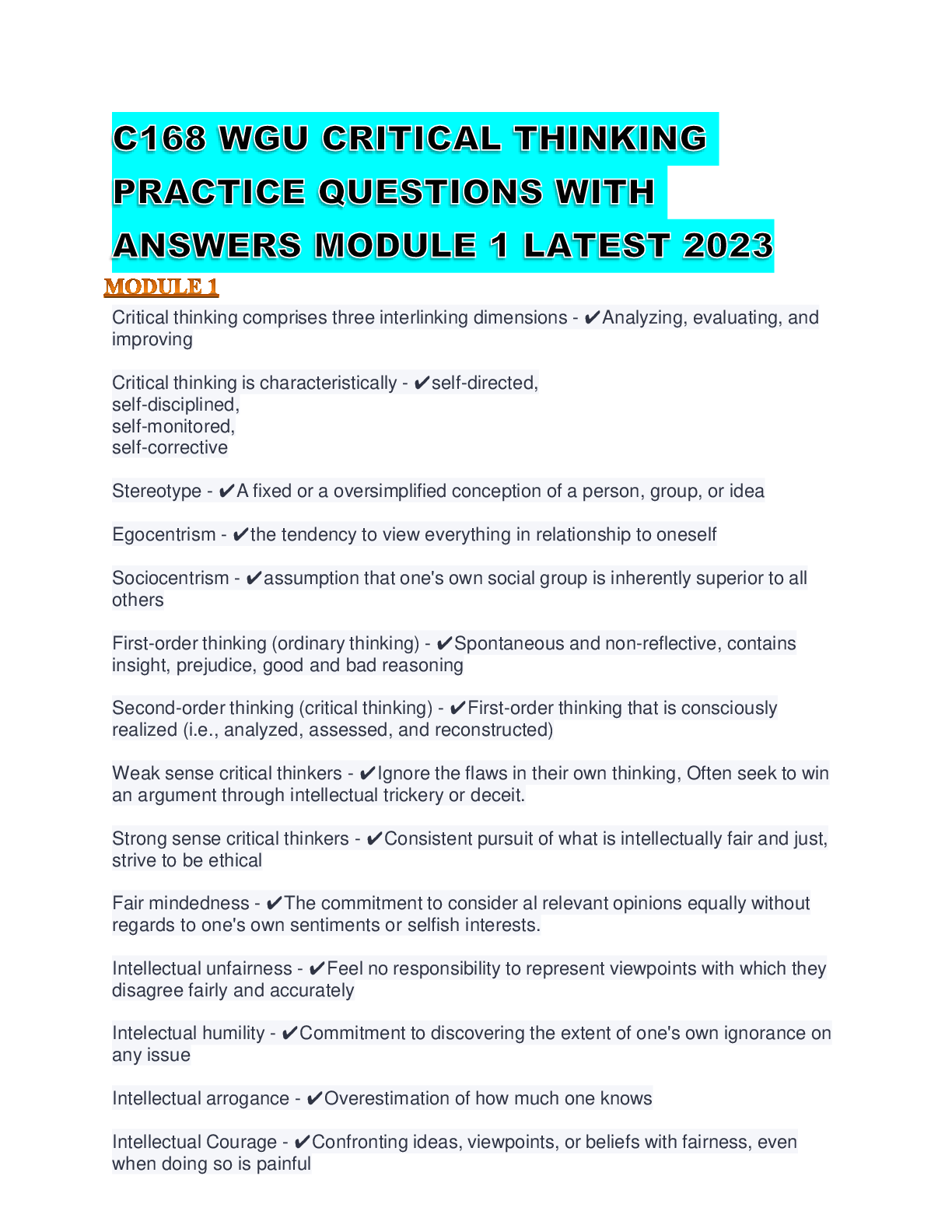
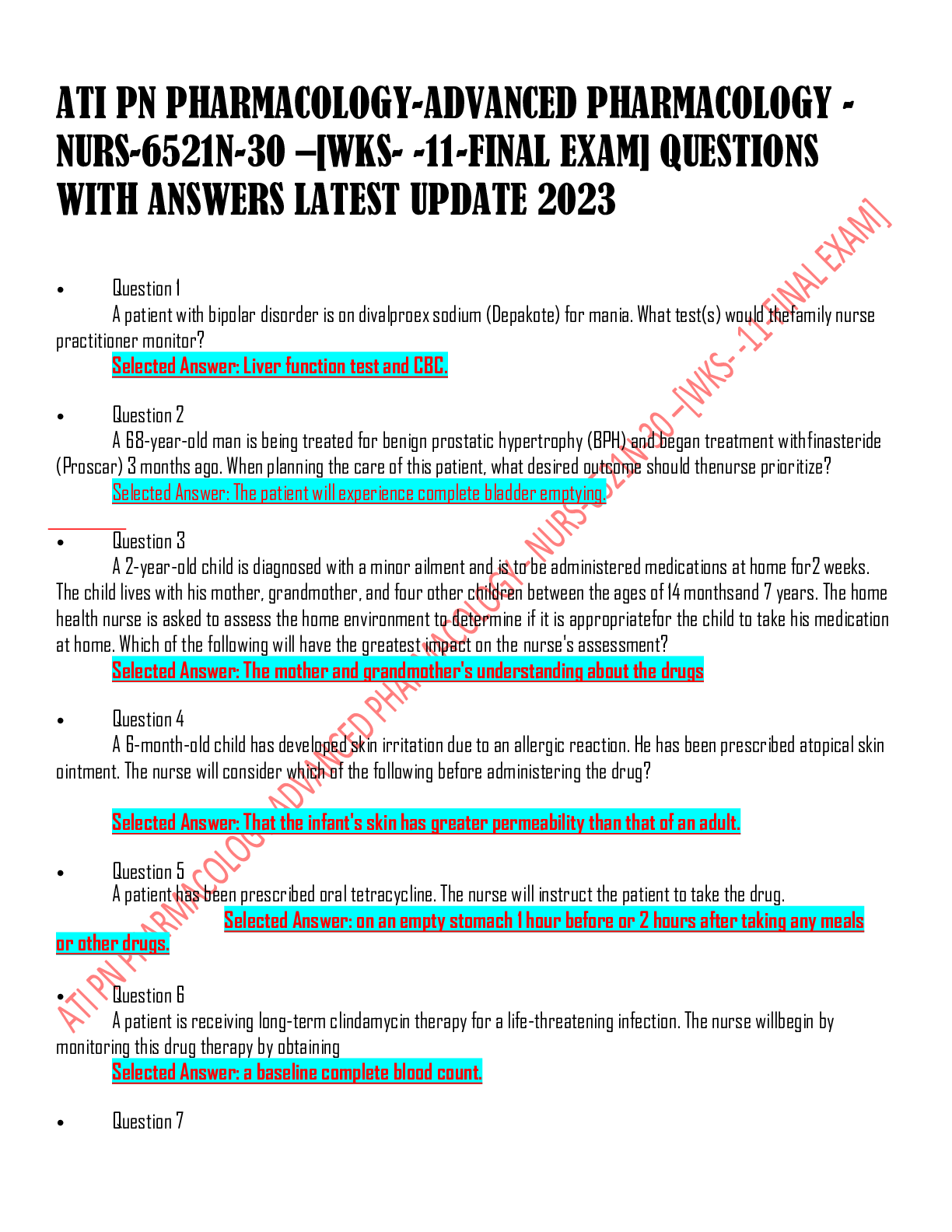
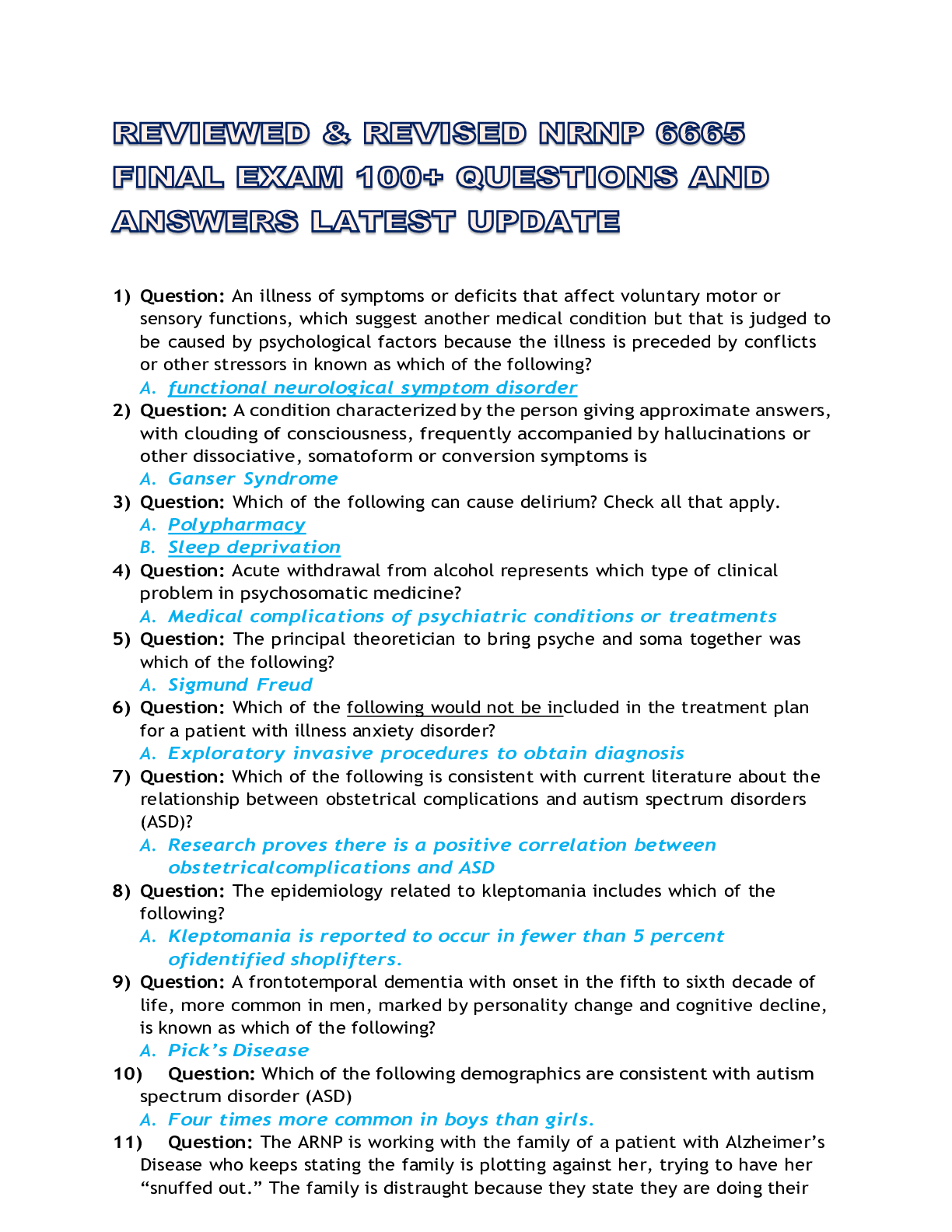
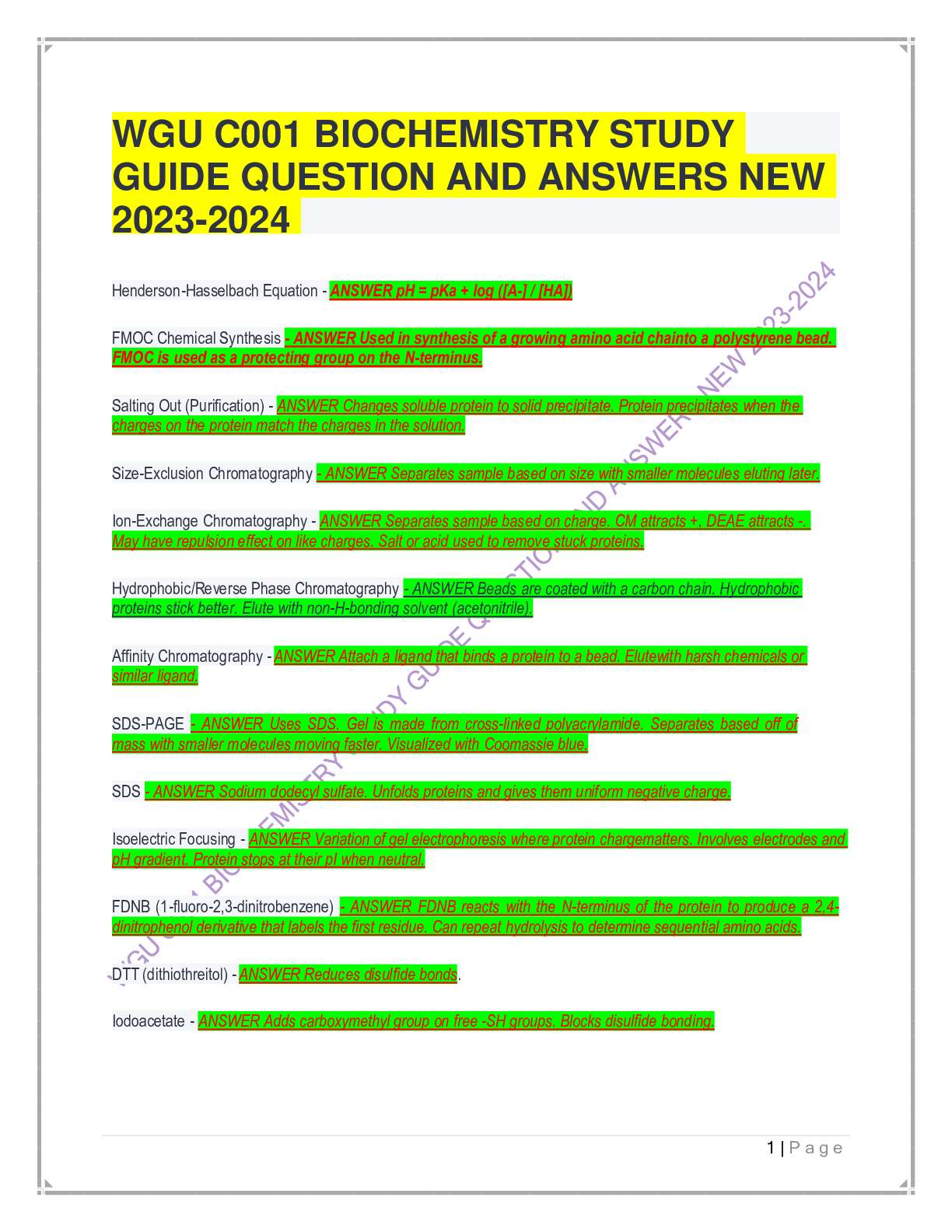
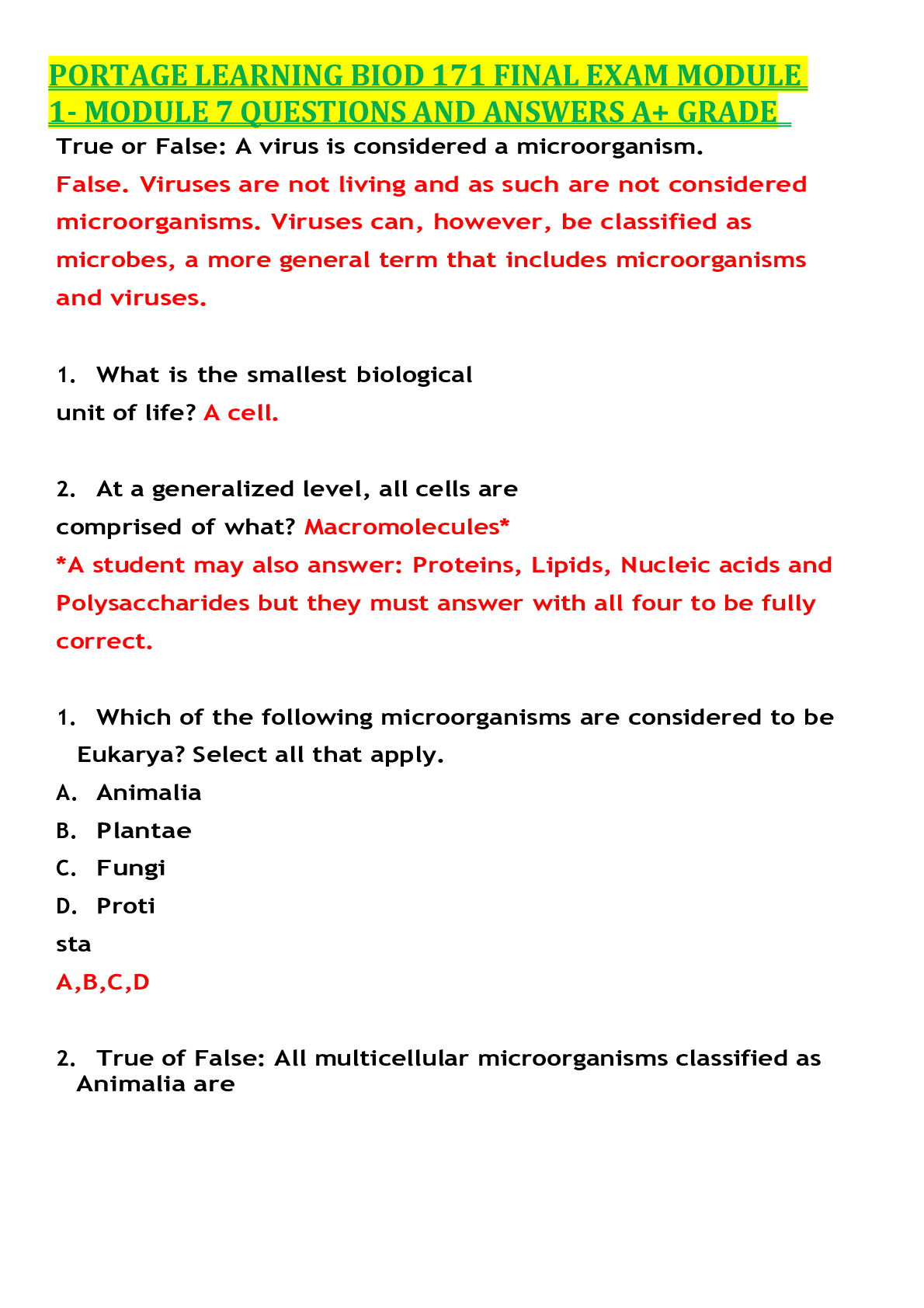
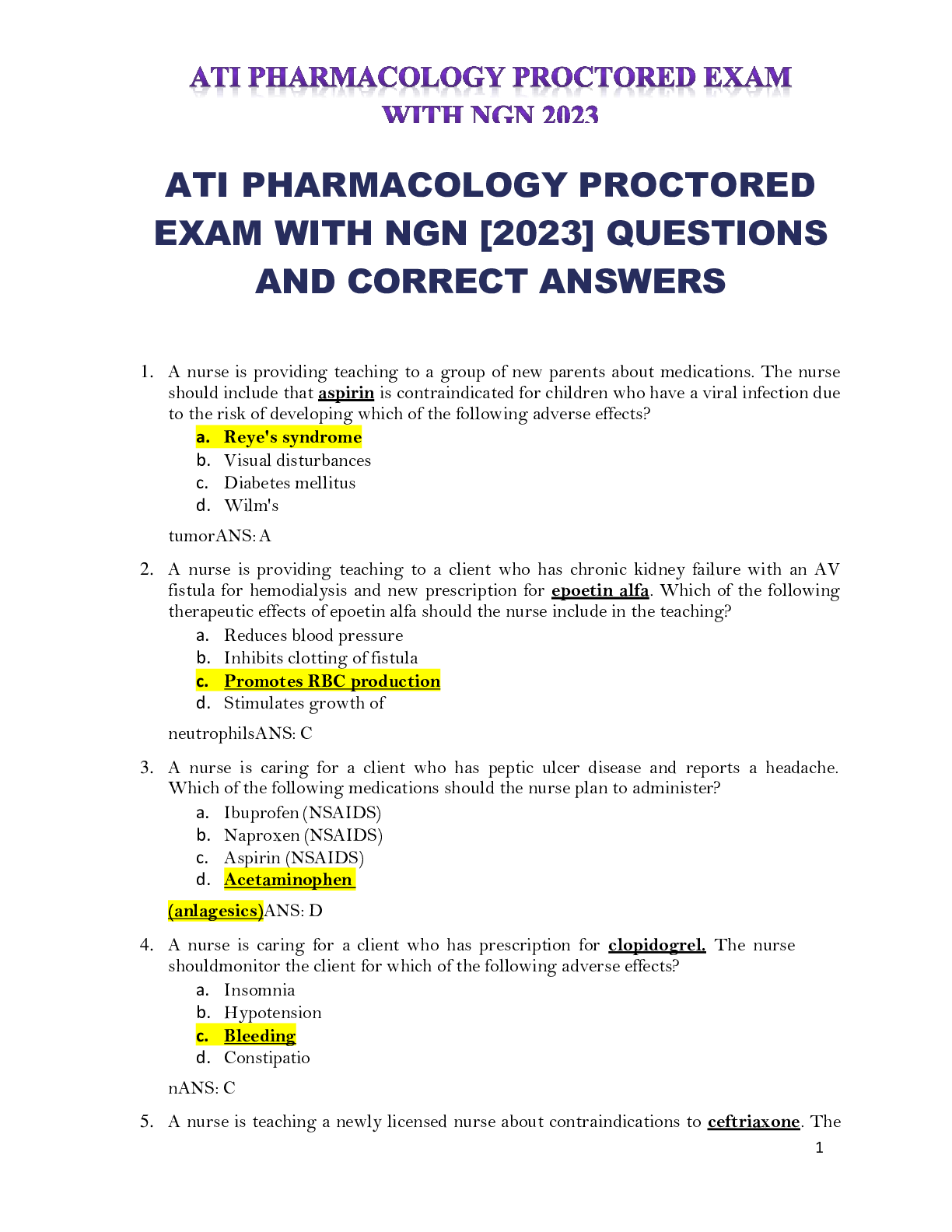

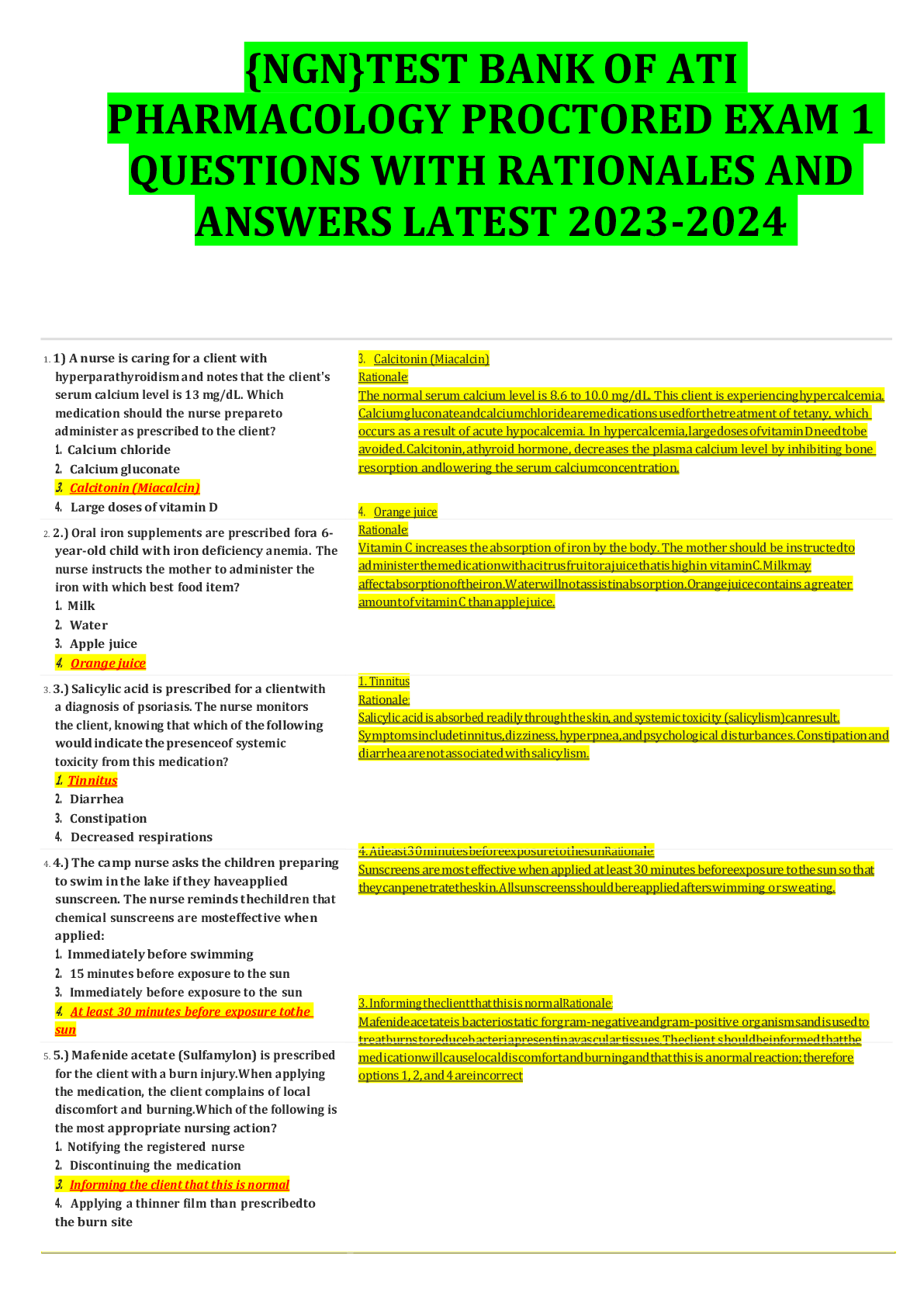
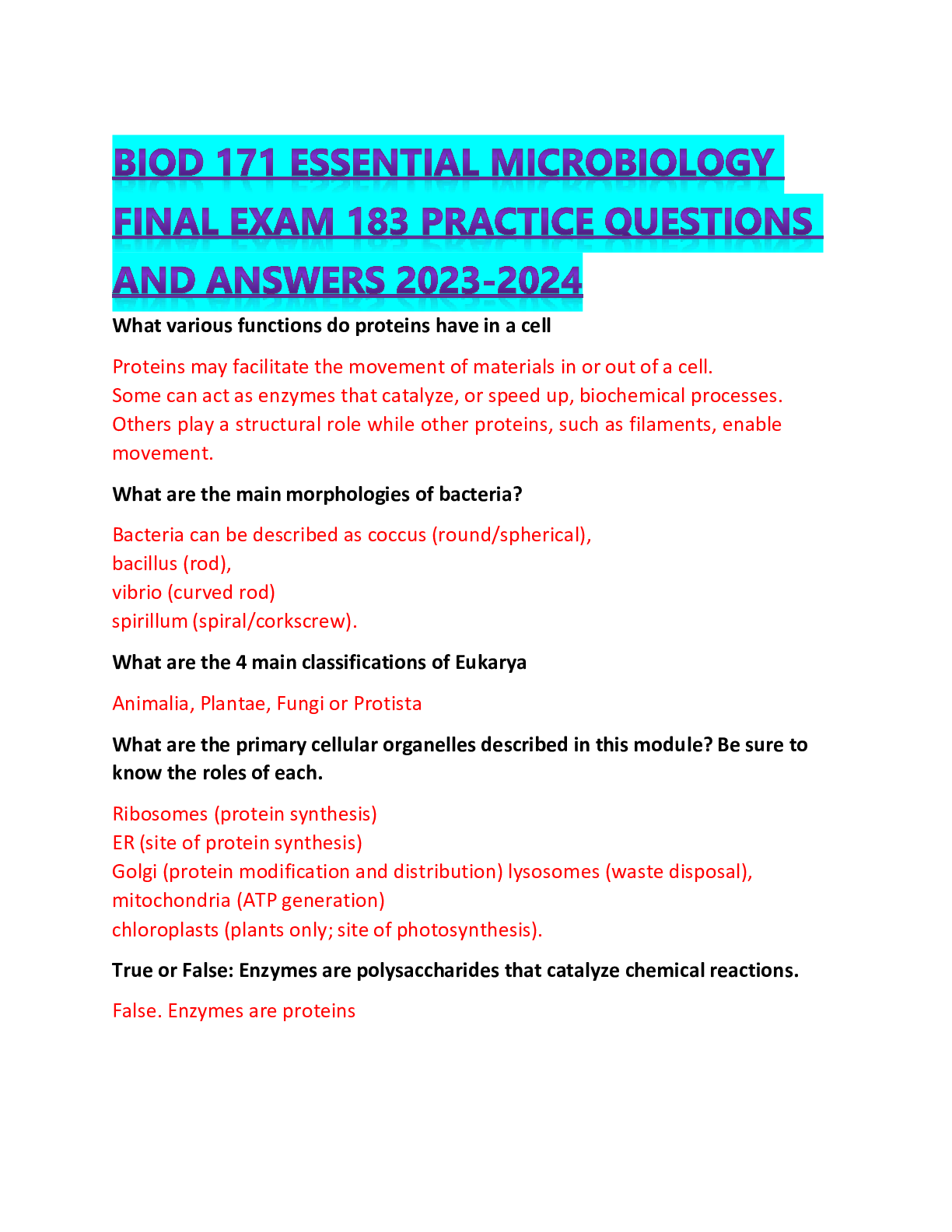



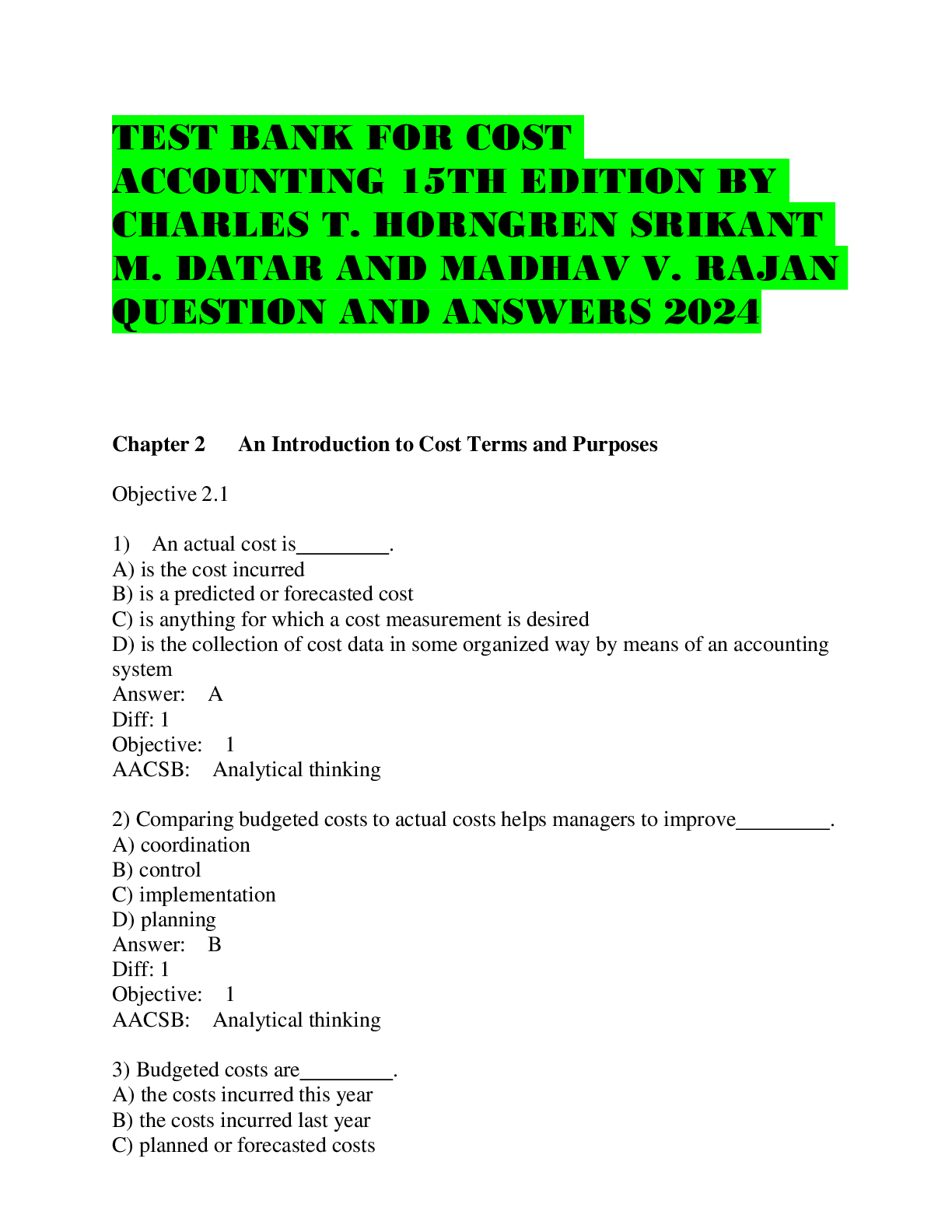
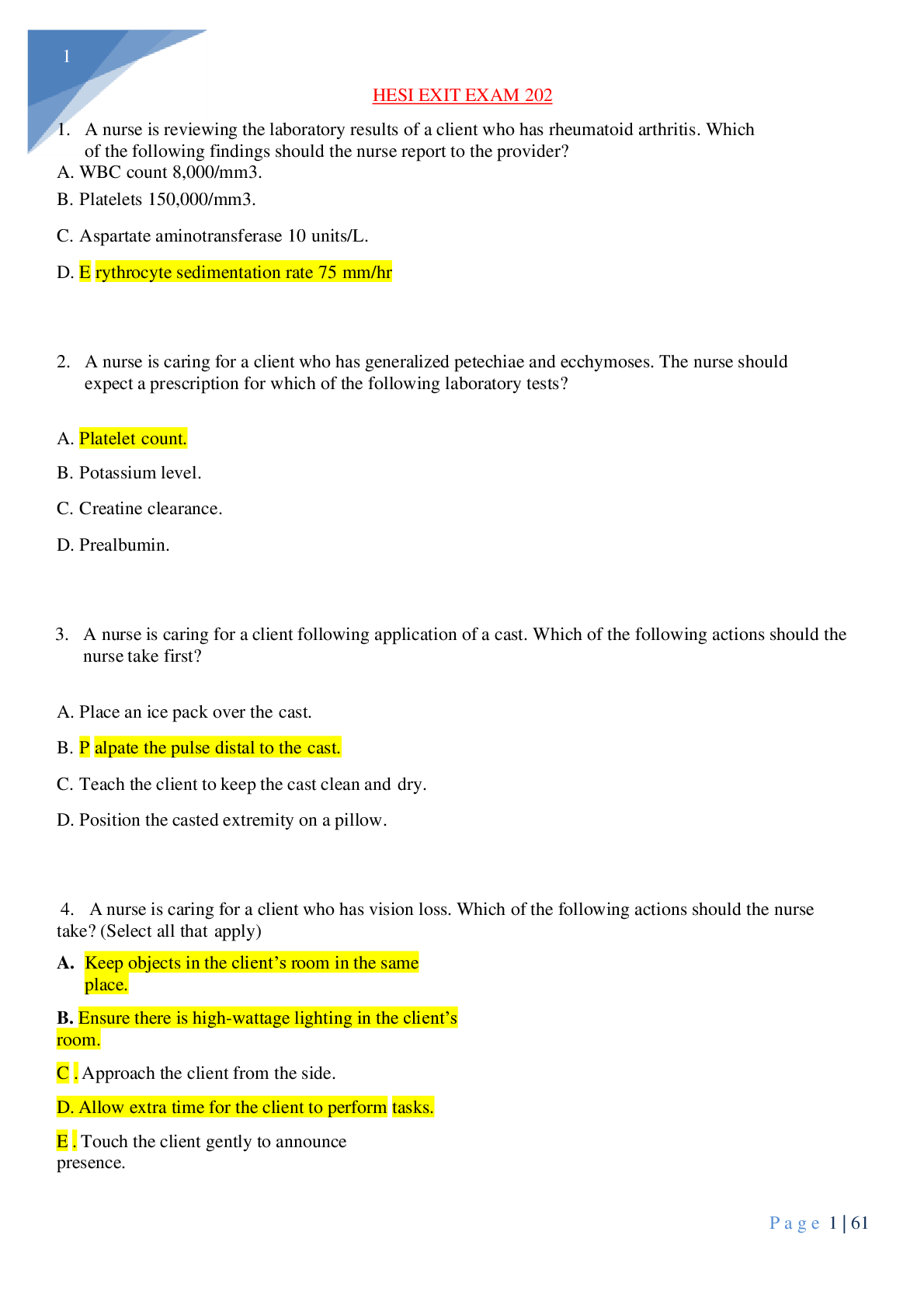
.png)

